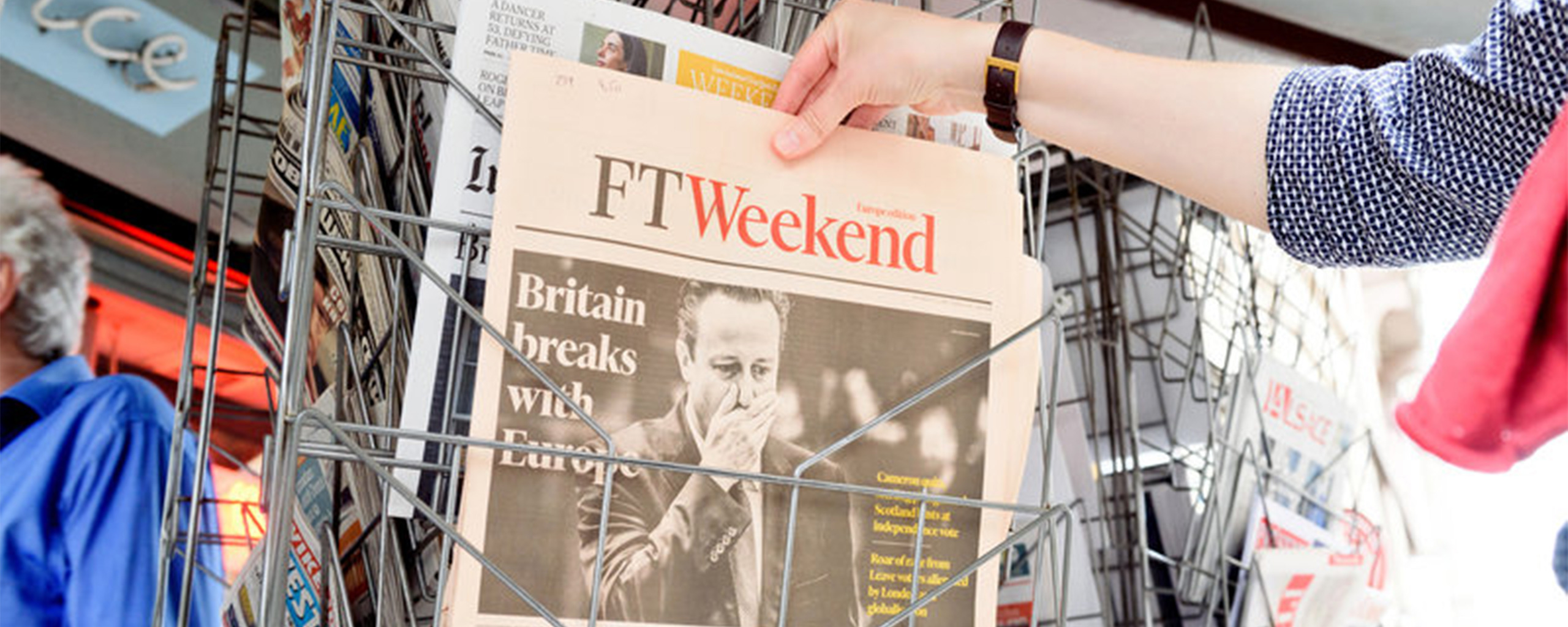23 June 2016 would have been a good day to bet against the pound in almost any forex pair. That’s because following the UK’s vote to leave the EU, the pound fell sharply.
Of course, not every news event is as seismic as Brexit, but every financial news story has some effect on confidence in a given currency.
Learning how news affects forex can provide opportunities to profit from trading. Below, we’ll have a look at the principles behind it.


Understanding market moves
Governments and organisations, such as central banks and research groups, regularly release economic data. For example, changes in interest rates or results of consumer confidence surveys.
Data that improves confidence in a currency (such as falling unemployment) increases the demand for it, so it goes up in value.
On the flip side, bad news, such as falling productivity or political turmoil, can have the opposite effect. As a forex trader, this is why you need to keep a close eye on news releases.
Economic calendars
In the digital age, we can easily access live economic data on our phones and computers.
But that’s not always enough when you’re trading – sometimes you need to anticipate the future too. If you’re aware of announcements, meetings, negotiations and decisions that are taking place in the near future, you might see an opportunity for a short-term forex purchase.
This is where economic calendars come in.
What data is included?
Economic calendars list upcoming global economic events and announcements – crucial information for all forex traders. Typical data includes:
- Interest rate decisions
- Retail sales announcements
- Inflation (consumer price or producer price)
- Unemployment
- Industrial production output
- Business sentiment surveys
- Consumer confidence surveys
- Trade balance
- Manufacturing sector surveys
Two of the most popular calendars are investing.com and dailyfx.com. They list upcoming events chronologically and rank their importance, so you can stay up to date with releases scheduled each week.

3 key numbers
Look on the right of each indicator in these two calendars and you’ll see three columns: previous; forecast (or consensus); and actual.
- Previous shows what the figure was last time the data was released.
- Forecast shows the current consensus taken from experts in that sector.
- Actual stays blank until the figures are released.
Trading tactics
When trading based on news releases, you need to understand the social and political issues in the currency zones you’re trading in. That’s why it’s best to start with a small number of zones, especially if you’re trading part-time.
Remember that every piece of economic news, however small, can influence a nation’s currency value. So, the more information you have the better.
That said, as with all trading, nothing is certain. As Brexit showed, forecasts are sometimes wrong, so use the economic calendar as a guide and not a rule book.
Forex trading basics for beginners
Main trading approaches
There are two main approaches to trading forex based on news releases: directional bias and non-directional bias.
- Directional bias means you are confident that a currency valuation will move in a certain direction when an announcement is made, so you invest before it happens. This is riskier than non-directional, so profits and losses can be higher.
- Non-directional bias means that you wait for the release of information before deciding whether to trade or not.

Main trading strategies
The approaches above lead us to three main trading strategies: position; reaction; and analysis. In descending order of risk, where one is most risky and three is least, the approaches are:
- Position trading: Here, you’re confident that a move in currency value will happen after the release of information. You invest either in or against the affected currency before the news is announced. If you’re right, you’ll have a head start on the reaction traders.
- Reaction trading: This means waiting for the news to be released, then quickly buying, selling or ignoring a currency.
- Analysis trading: This could be described as reaction trading in slow motion. You observe the news, see how it affects the market, then determine whether changes appear temporary or part of a longer trend before investing.
For pros
Once you’ve got used to monitoring the news and economic calendars, you’ll know if forex trading on news releases is for you.
As you get more experienced, you’ll want to delve deeper and diversify your methods. Read up on:
- Slingshot strategies (looking for currency pairs that break out of their normal range and buying in anticipation of a return to normal)
- Trading spikes (rapidly developing peaks and troughs that don’t last for long, but provide opportunity to buy or sell quickly)
- Using exotic options (options that differ in regard to payment structures, expiration dates and strike prices)
Apply the skills you’ve picked up to squeeze more value and less risk out of your trades.




